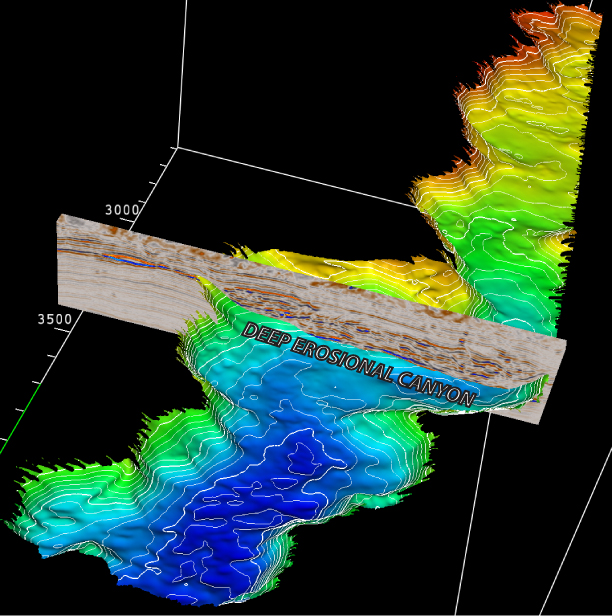|
DYNAMIC STRATIGRAPHY WORKGROUP |
|
Publications and presentations:
Publications
Conference/meeting presentations: Fernandes, A., Steel, R., Henriksen, S., Mohrig, D., 2009, Comparing Stratal Architectures in Confined and Weakly Confined Turbidite Channel Systems, AAPG Annual Conference, Denver |
|
Infill architectures of well-confined and weakly confined submarine channel systems: a seismic study |
|
Summary of work: Two sinuous turbidite channel systems have been interpreted in detail on a 3-D high resolution seismic dataset from offshore West Africa to develop criteria for distinguishing depositional architecture created by turbidity currents that were wholly contained in submarine canyons from partly contained currents infilling channels that are shallow relative to current thickness. This study investigates the depositional consequences of high-relief erosional topography versus coevally evolving constructional levees. Related work continues to explore this question through the study of the Brushy Canyon Formation upper slope channel outcrops, in West Texas. |
|
Research question(s): What is the relationship between deposit architectures (seismic-scale or outcrop scale) and current thickness in comparison to relief of the guiding channel?
How does channel morphology evolve when currents are completely contained within deep erosional topography versus just partly contained within co-evolving levees? |
|
System 2 in our comparative study was deposited within co-evolving levees. |
|
System 1 was created by turbidity currents infilling a high relief canyon. Flow was from top to bottom. |

